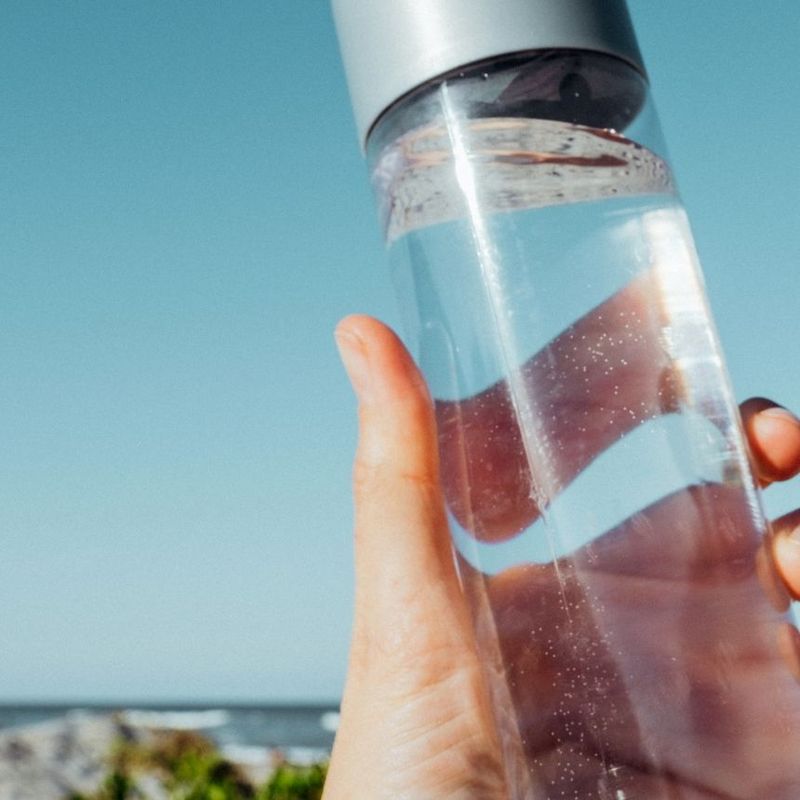31. August 2023
To make industry and heavy goods transport on land, at sea and in the air more climate-friendly, we are going to need green hydrogen in enormous quantities. It may also be possible to produce this volatile gas directly in offshore wind farms. What are the advantages of electrolysis on the high seas? What challenges need to be overcome? And how can the safety of the necessary installations on the open sea be ensured? We spoke to Britta Schacht, Vice President Renewables Certification at TÜV NORD.
#explore: Ms. Schacht, people have been thinking about producing green hydrogen directly at offshore wind farms for several years now. What are the advantages of hydrogen production on the open sea?
Britta Schacht: We’re already producing more electricity from renewable energies than the power grid can absorb. Instead of shutting wind farms down in such situations, this energy could be used to produce green hydrogen as a means of storing that energy for future use. But even after these times of overproduction, local hydrogen production would still have many advantages: If part of the offshore wind power could be converted directly into hydrogen, this would take the burden off the local power grids. At the same time, the pressure to expand what are known as electricity highways, which will one day be used to transport green electricity from the coasts to the interior of the country and further down to southern Germany, is easing. But offshore production could also be beneficial for the economic operation of the plant in question: If the hydrogen could be transported ashore in tankers or, ideally, even via existing gas pipelines, fewer power cables would have to be laid through the sea during the construction of the connected wind farms. This would significantly reduce their infrastructure costs and, according to calculations, also more than offset the higher construction and operating costs of offshore electrolysers.
What might offshore electrolysers of this kind look like?
The Fraunhofer Institute for Solar Energy Systems, ISE, was commissioned by the German Federal Ministry for Economic Affairs and Climate Action to demonstrate how offshore electrolysis might succeed both technically and economically. The ISE system relies on a modular design that ought to be easily adaptable to different hydrogen production capacities. The fresh water required for electrolysis is obtained by desalinating seawater. And the waste heat from the electrolysers is also used to make this process as energy-efficient as possible. In the H2Mare hydrogen flagship project of the Federal Ministry of Education and Research, the participating research institutes and companies are also working on technologies for the production of hydrogen on the high seas. This also involves solutions which use hydrogen to produce downstream products such as green methanol or green ammonia , which can then be used in the chemicals industry. Moreover, in the context of H2Mare the possibility of seawater electrolysis is being explored as a way of saving the energy required for desalination plants.
What technical challenges will offshore electrolysis have to overcome?
This will always depend on the concept being pursued: Whether the hydrogen is to be generated on a production platform at the wind farm itself, as envisaged by Fraunhofer ISE, on a nearby island such as Bornholm, or even on an artificially created “energy island” of the kind that Denmark is looking at. Where the intention is to produce the hydrogen at an offshore wind farm, the concepts explored to date have envisaged small, modular production units that can be installed quickly and added to over time. The disadvantage of these is that the electrolysers will be exposed to salt water, which will cause the equipment to age faster. Larger production units could probably be sealed more effectively against weather conditions but would be more time-consuming and costly to manufacture and install. On an artificial energy island, on the other hand, the electrolysers would be largely protected from seawater, but the island would have to be constructed first, which would cost both time and money. The Allianz insurance company recently announced plans to build two such islands in the North Sea by 2032. The Danish government, on the other hand, has postponed the decision on a planned energy island until the end of this year, saying that the project is too costly in its envisaged form.
What special safety conditions will have to be in place for offshore electrolysers?
First of all, of course, you’ll have to ensure that this highly flammable gas can’t escape; storage tanks will have to be sealed as tightly as possible, and potential ignition sources minimised. The safety of hydrogen infrastructure is by no means a new issue, either for the industrial sector or for us at TÜV NORD. But having stable, land-based installations that are easy to monitor, as has been the case to date, is a completely different proposition than ensuring that they will work reliably and trouble-free on the high seas. You also have to think about the extent to which maintenance or repair teams can be taken out to unmanned systems, including under unfavourable weather conditions. It’s here that we could no doubt call on the experience of the oil and gas industry, for which working on the high seas is part of everyday life.
About Britta Schacht:
Britta Schacht is Vice President Renewables Certification at TÜV NORD. With her 85 employees in Germany and China, Ms. Schacht, who holds a doctorate in engineering, is making a significant contribution to ensuring that the power of wind and sun can be converted into electricity efficiently, safely and reliably.
When are the first electrolysers expected to be built at sea?
We expect the financing decisions for the first concrete projects to be made next year, followed by their implementation in 2025. In all likelihood, different concepts will have to coexist, at least in the short term. This will make it possible to trial different methods to see how well they work in technical and economic terms and find out which of them will be especially suitable for which applications and initial situations.
What projects is TÜV NORD involved in? What tasks are you and your colleagues taking on in this field?
We’re involved in projects in Germany, Denmark and the Netherlands, which we’ve been supporting since the early concept phase. Our job is to validate the basic design and prepare future certifications. In other words, we look at the safety requirements that a system like this must meet – in terms of occupational safety, the structural engineering behind the design and the installation’s connection to the transport system, i.e. to tankers or a pipeline. We pay special attention to structural elements that are exposed to wave movements during marine operation, as these will naturally have to satisfy higher requirements than static components.
Can such offshore electrolysis platforms be built safely based on today's regulations, or might there be a need for further regulatory improvements?
In fact, there are already various maritime standards which apply to the oil industry and wind energy and could in principle be applied to this field as well. But as with any technology, the regulations are continuously evolving. For example, the catalogue of requirements for onshore wind turbines is many times more extensive today than it was when they were first built. From a regulatory point of view, too, dealing with a new technology is always a learning process, and this will certainly be no different for hydrogen production on the high seas.




